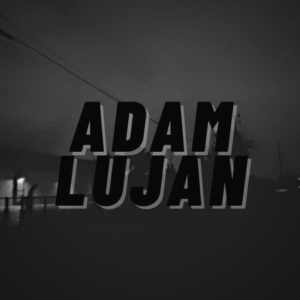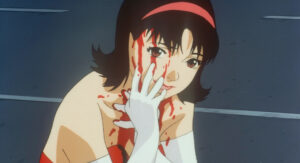Recently I have been working on a serial. I know most of you know what a serial is, but for the folks who seem a bit lost by that word, a serial is a piece of fiction that is split up into parts and usually is subject to period releases rather than getting the entire story all at once. That means that the story must be written so that each chapter, or “episode” as some authors refer to them, should have its own tiny little cliffhanger when it concludes so that it adds incentive for the reader to be excited for when the next installment becomes available. This continues until the ultimate ending, where the reader is able to see the final conclusion. When done, if you were to picture it, it would look like a tall mountain with lots of little drop-offs where the reader is subject to the narrative and the twists and turns it can provide.
I decided on this medium because the story is going to be about professional wrestling, and due to the nature of how that media is presented, I thought that doing it in a serial format would be ideal. I had some back-and-forth about it in my head. I wasn’t sure if it was a good idea, and I also didn’t know if formatting something like a serial would be worth it in the long run. Ultimately, I decided to do it for a few reasons: a) because it would be a great way to tell the story, and b) because Kindle Vella has decent bonuses for content alone.
In all seriousness, finding the right medium for stories is something that doesn’t get talked about enough but it does play a huge role in how you construct your project. I also think that when I speak to others who aren’t in the arts or that have a good understanding of what it takes to craft different forms of art inside different mediums that don’t have an understanding as to WHY people choose the formats they do for their stories.
There have been countless times I have heard people say the phrase, it would make a great movie. But I often wonder if the story in mind would make a good movie. There are times when a good story is just that, a good story. It takes work and depth to make it into something else. A novel starts out as a story or an idea.
These conversations always remind me of two artists, both of which are world-renowned and are recognized for their amazing talents in their individual fields, and those two artists are Stanley Kubrick and Alan Moore.
Let’s start with Moore: if you have any familiarity with Moore, you know how much he has detested his graphic novels being adapted to the screen. Moore’s main argument is that so much of his messaging and subtle imagery gets lost when you have to boil it down to its plot for a film. Not just that, but the way that his themes have been altered to fit the director’s narrative also seems to be a sticking point for the English author.
I think this is a pretty accurate observation of the adaptations of Moore’s work. One could look at The League of Extraordinary Gentlemen as a perfect example. It completely missed the fun elements of the source material, and it was ultimately the movie that pushed Sean Connery out of cinema. The problem with that movie, in my opinion, is that they tried to take the wrong elements of what made that book great. The thought-provoking moments were gone. All that was left was the sizzle, and the sizzle only lasts for a short time.
One film adaptation that is tough for me to say missed the mark is definitely V For Vendetta. I love that movie. It looks amazing and the acting and the delivery are exquisite. But, I do have to admit that if you were to hold it against the book, it doesn’t even come close to the quality that Moore produced. The themes of showing the extremes of government were there but changing the discussion of anarchism and fascism to how we should look at the Bush Administration and its follies did water it down a bit, at least for me. While it did make you think, it wasn’t the same. There is no way you could take a Moore work and make it exactly as he intended, and that’s the issue with adapting a work.
It’s by no means literary, but even looking at how the video game Resident Evil has been handled is another way to point to the importance of the medium. The first game is amazing, and playing it in the mid-90s with all the lights turned off in the house was enough to scare the shit out of you. There’s something about the polygraphic creatures jumping out at you behind every corner that captures your imagination, even with the horrendous voice acting. But when that was transferred to film, numerous times, it never got close to how good that game was when it came to instilling fear and excitement. They were just corny horror movies with a convoluted plot. There are enough of those out there.
Now, let’s take a look at an amazing adapter, Stanley Kubrick. Kubrick liked adapting books because he liked having a framework to build off rather than using an original idea. The way he went about adapting was peculiar as well because he only took things that he knew he could use to advance his vision and the things that he couldn’t were left by the wayside.
Here are Kubrick’s thoughts on adapting The Shining with author Diane Johnson, and the reasons he had behind changing the movie so much from the book:
With “The Shining,” the problem was to extract the essential plot and to re-invent the sections of the story that were weak. The characters needed to be developed a bit differently than they were in the novel. It is in the pruning down phase that the undoing of great novels usually occurs because so much of what is good about them has to do with the fineness of the writing, the insight of the author and often the density of the story. But The Shining was a different matter. Its virtues lay almost entirely in the plot, and it didn’t prove to be very much of a problem to adapt it into the screenplay form. Diane and I talked a lot about the book and then we made an outline of the scenes we thought should be included in the film. This list of scenes was shuffled and reshuffled until we thought it was right, and then we began to write. We did several drafts of the screenplay, which was subsequently revised at different stages before and during shooting.
Source: http://www.visual-memory.co.uk/amk/doc/interview.ts.html
Kubrick and Johnson decided what scenes to write before the script was even started because they wanted to know what scenes would be practical not just for the story, but shooting the story. Constructing a movie is different from a book because a book had imagination as a tool, while a movie has to present moving pictures to an audience. It also has to look realistic enough to pull the audience in and make them forget they are watching a movie. Those are much more difficult that when you are just writing a story.
A movie also has to have logistics like a budget and shooting schedule to be considered. So when Kubrick was constructing this movie, he wanted to keep in mind the elements that Stephen King included in his book, but he also wanted to make sure to get across to his audience his vision of his film. Understanding the difference is key. Kubrick wasn’t concerned with the plot, because the feelings the movie invokes are much more important than the plot of the film. Meanwhile, King has to produce a novel that will keep people’s attention, and have a good enough plot that it will keep people from shaking their heads in disbelief.
Those are questions one asks oneself when constructing a story, not just that a story is good. It has to be doable. There are a million amazing stories, but books, novels, comics, those have to have a beginning, middle, and end. They have to coherently express what you want to the person reading the work. Those present their own challenges.
Back to my work: I’ve been happy with the progress so far, but I have pretty high ambitions for it at times. My hope for it is to present a compelling story and to show a side of wrestling that can relate to everyday people. The reasoning behind it being a serial is because professional wrestling, as long as there has been “studio wrestling”, has been resented in a continuing story where you have to follow each week in order to get the entire picture, much like a serial. Seems fitting, don’t you think?


